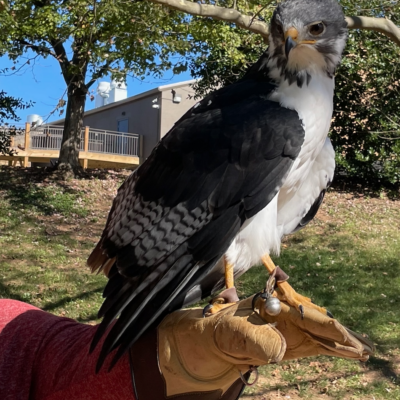The church of rock and roll was built on the remains of just about every other church that came before it. But somehow, the great rock tradition of mining the music of alien cultures—from slave music to traditional Appalachian music—has mostly kept north of the border. That’s why Simon & Garfunkel’s “El Condor Pasa,” a Peruvian song from the early 20th century, still sounds like such a weird pop song.
|
Former Tandem teacher Suz Slezak returns to town with David Wax and their band the David Wax Museum to release a new disc, Everything is Saved, this week at The Southern. |
No mas! says the David Wax Museum, whose members incorporate elements of traditional Mexican music, or son, into their music in ways that are so deft as to be largely inconspicuous—at least until you see them in concert. If frontman David Wax’s guitar sounds a little chintsy on his band’s new record, that’s because it’s not a guitar at all, but a jarana, its smaller Mexican equivalent. If the vibra-slap doesn’t ring as long as you’re used to, that’s because the shimmering, rattlesnake-like effect it produces is actually being played by Suz Slezak on the region’s early ancestor: a donkey jawbone, its teeth all rattly.
When the David Wax Museum releases its self-financed, self-released new record at the Southern, it will be the fourth time the Boston band has played Charlottesville since committing to touring full time in 2009. The local love goes on. The seeds of the band were sown, funny enough, in the same place where Sons of Bill’s James Wilson learned to be an outlaw: at Deep Springs College, the small liberal arts school 40 miles from the closest town on the California/Arizona border. (The two narrowly missed each other.) After a stint there, Wax went to Harvard, and on summers off traveled through rural Mexico, studying the country’s traditional music.
The Museum’s other half, Slezak, grew up on a farm in Free Union and is a former teacher at Tandem High School, where her father also works. Slezak left that gig for Boston, where she got another job, which she left in 2009 to tour with the band. She says that her brother is a good friend to the Wilson boys—known more widely as the Sons of Bill. (Luke Wilson’s band, The New Best Recipe, opens the show.)
The Southern’s is a smaller stage than the band has been growing used to. The tour started with a sold-out gig in Boston, near where they were chosen, through a contest, to play at the Newport Folk Festival in 2010. Acclaim soon followed from an array of sources, most notably NPR, which reported that the band courted fans “cheerfully but aggressively” and that the audience erupted into a deafening roar after the group ditched the stage to play, unamplified, in the center of the crowd. Concluded the review, “David Wax Museum won’t need to enter contests much longer.”
And certainly not if they keep working this hard: The David Wax Museum is, and will probably always be, the only band to confirm an interview time with a handwritten note sent through snail-mail.
O.K., so maybe the David Wax Museum isn’t totally alone in drawing on at least a Southwestern influence. Take Calexico, Devendra Banhart or Los Lobos, for example. The difference? “What I think we’re doing is unique in the way that David really digs in and tries to get inside some of these songs and tries to turn them into his own,” says Slazak. “We’re trying to turn them into songs that we can play authentically.”
The traditional instrumentation produces a ramshackle effect that sounds a bit tinny on record—they’re still a rock band, so they’re up against drumsets and electric guitars—but the group plays with an effusiveness that is undeniable. Happier songs like single “Born with a Broken Heart” are so positive they can make you want to search for faults where perhaps none exist. But what catches listeners off guard are songs like “Si Te Vas,” an earthy instrumental interlude played on solo accordion. Moments later, it’s a couple of lonesome country ballads, like album closers “The Least I Can Do” and “Wait For Me.” How do they do fit it all in?
Call it a sí, se puede attitude.
/jacobs_wax_43.jpg)





